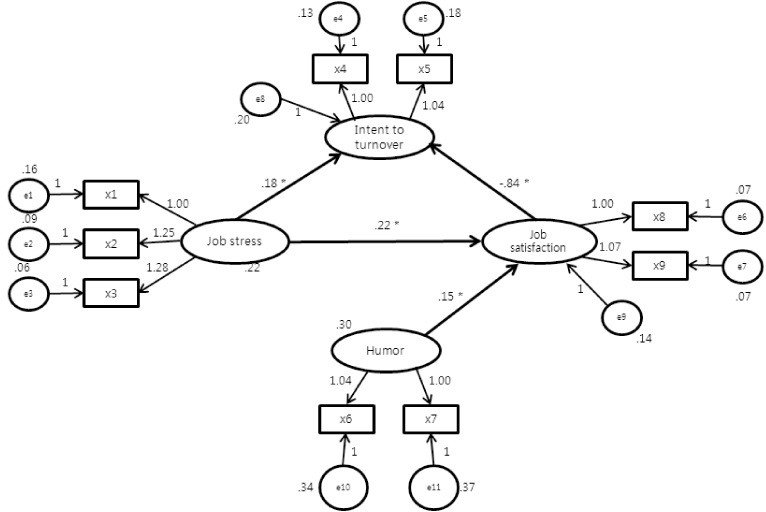1Department of Nursing, Baekseok University, Korea.
Copyright © 2013 Korean Academy of Nursing Administration



General Characteristics of Participants (N=275)
OBGY=Obstetric Gynecology; PED=Pediatrics.
*Special unit includes Operating room, Emergency room, and Psychiatry.
Correlations among Measured Variables (N=275)
*p<.05, **p<.01
Effects of Predictor Variables in the Modified Model (N=275)
**p<0.01
OBGY=Obstetric Gynecology; PED=Pediatrics. *Special unit includes Operating room, Emergency room, and Psychiatry.
*
**